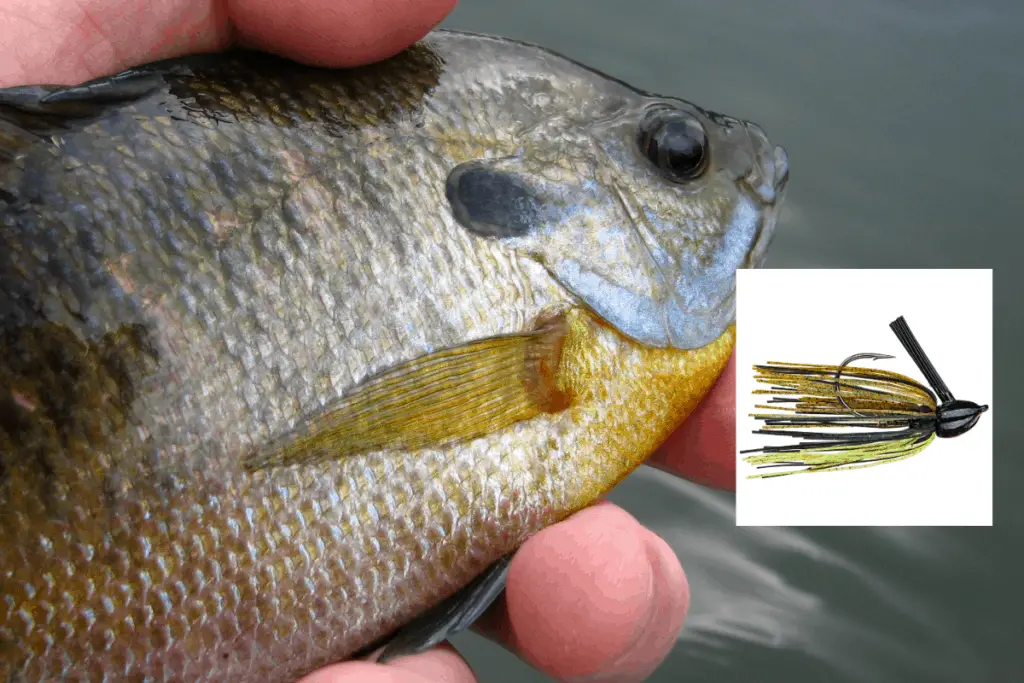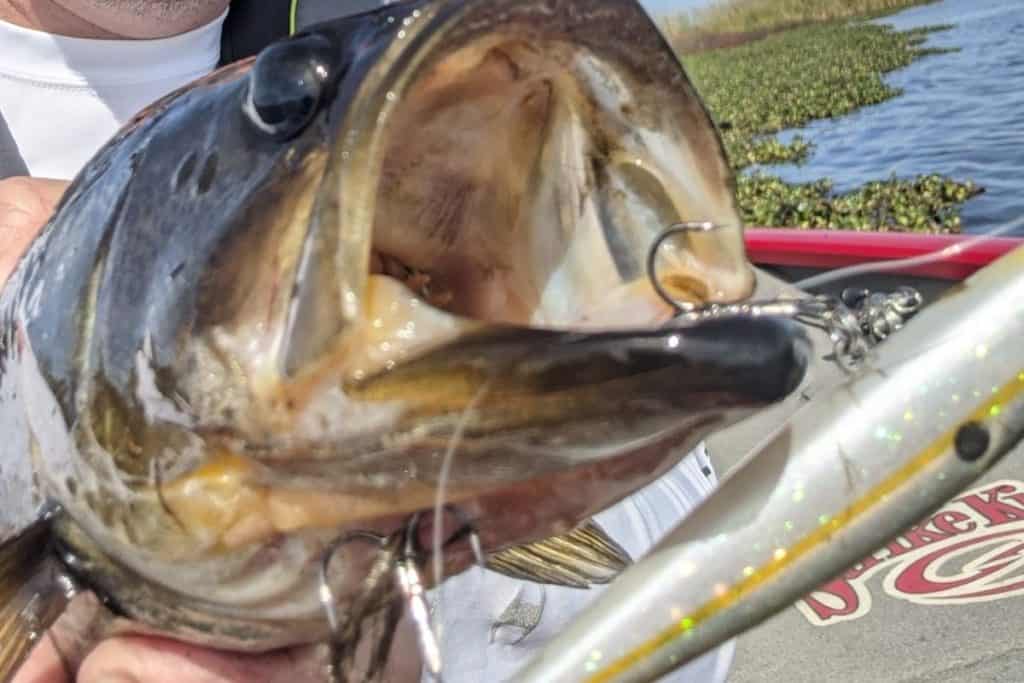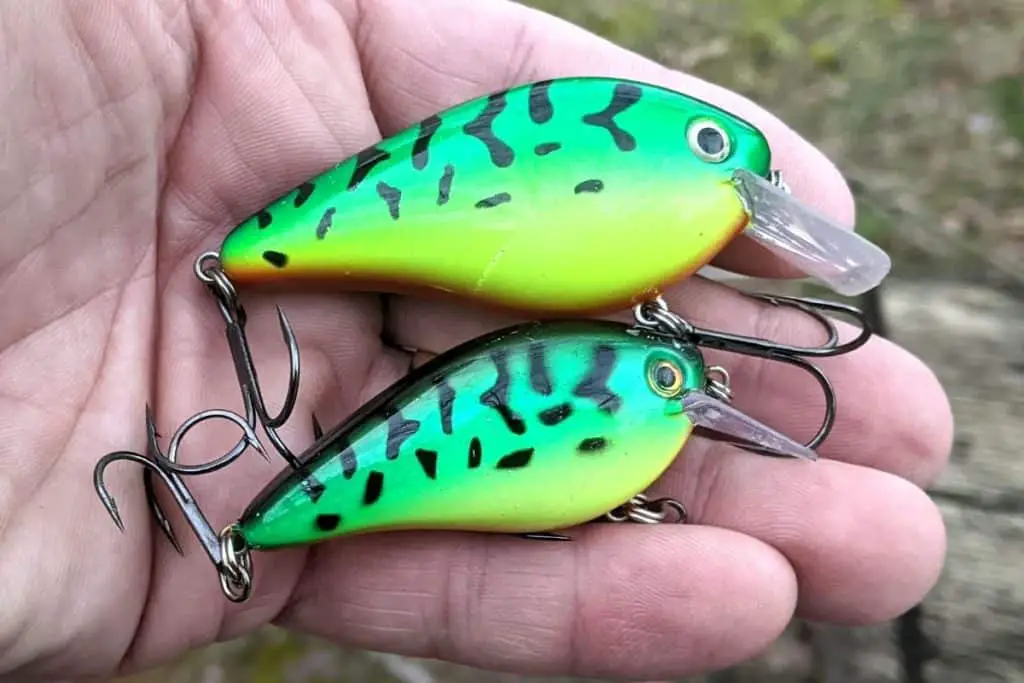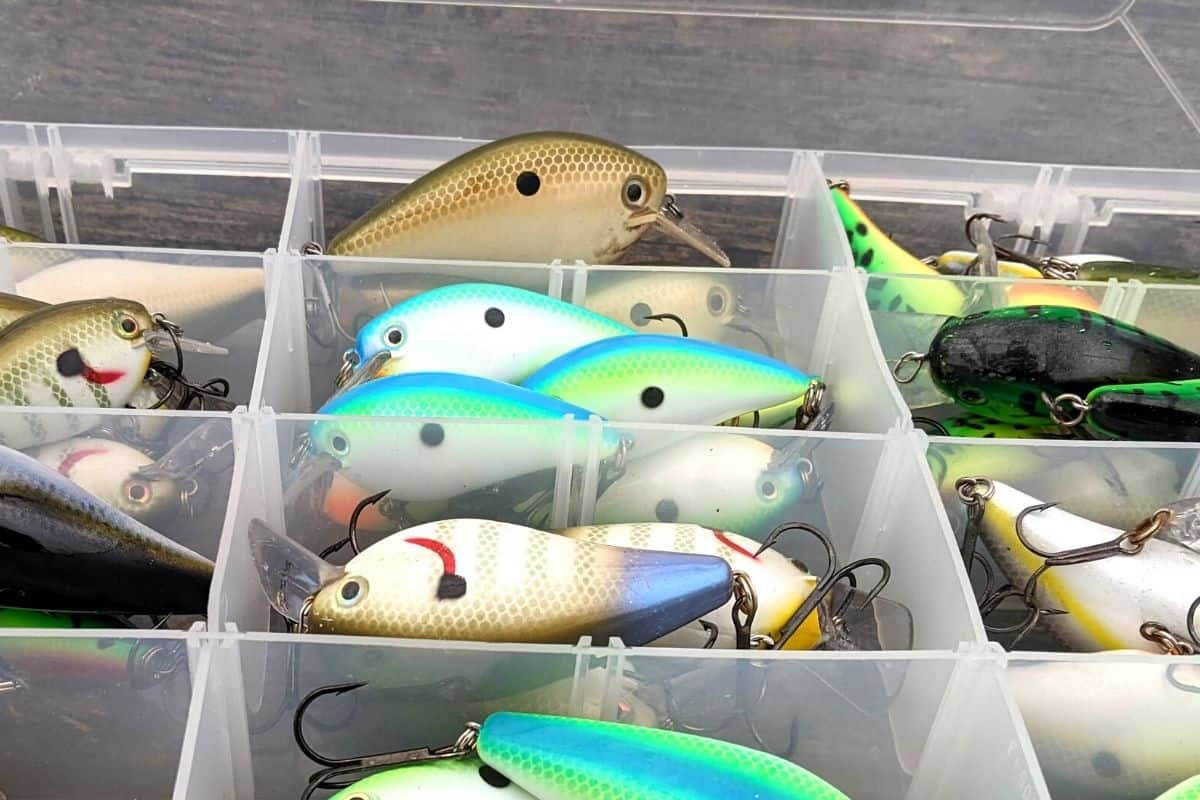There is a fine line in the bass fishing world between changing lures too often and not enough. This simple approach has helped me to dial in the correct color for the situation many times.
Look at how the bass are eating or reacting to your lure. If they are taking it deep and aggressively the color choice is a good one. When the bass are swatting or nipping at the lure it is time to change colors.
There are a couple of other key factors to consider, but let’s jump into color selection when bass fishing.
A Good Starting Place for Lure Color Selection
Color choice can be overwhelming. Manufacturers excel at eye-catching offerings that look amazing. And they should. That is what sells products and keeps the industry thriving.
But where do we begin?
Water clarity? Wind? Depth? Forage? These are all factors to consider.
If you are unsure about a starting point, then begin with something that looks as natural or real as possible.
Are there lots of shad in the waters you fish? Then use lures with silvers, whites, and grays.
Is your lake or pond full of panfish? Then begin with a lure that mimics those color offerings.
Starting with a natural-looking lure, no matter what the water clarity, is never a bad choice. Adjustments can be made from this starting point.

What to Look for When Deciding to Change Colors
This is where bass anglers need to pay attention to the details.
From the retrieve to the actual bite, every piece of information is important.
When retrieving the lure, do you see bass interested in it? Are they following it? But do they then turn away and not strike.
This is the first indicator that the color may not be right.
I will change the retrieve slightly before I swap colors. Speed it up. Slow it down. Start-stop. All of these quick and easy adjustments will tell me if there is something else I can be doing to get those bass to commit to the lure.
If I am still not seeing results, it is time to reach for the clippers and try another color.
This is where I will consider how the conditions might influence what I do. If the water is murky, then I might go with more solid patterns to create a stronger profile. If the water is clear, I may opt for translucent colors. In clean water, I do not want the bass to get a great look at the lure and then turn away because it appears unnatural.

How to Tell if The Color is Dialed in Correctly
When I see the bass hooking up with the lure deeper in their mouth, I know I have selected the right lure, and have the right presentation, and cadence.
This applies to soft plastics as well as hard baits.
There are times when a hard suspending jerkbait is hit so aggressively the front trebles are in the mouth of the bass, not just the back hook.
I have used squarebills and had the fish inhale the entire body of the lure.
Swim jigs have been completely eaten.
These are all good signs that things are going right and you have chosen a color that is getting the job done.
Another Key Factor to Consider When Choosing a Lure
The size of the lure is another crucial factor to consider.
On a recent trip, I switched from a KVD 1.5 to a 2.5 squarebill in the exact same color. The difference was immediate.
I went from catching a few, tiny smallmouth to slamming better quality fish that were hitting with aggression.
(Here is an article about selecting the right crankbait size.)

A Fun Way to Experiment With Color
Fishing with a friend or family member is always fun.
Take the time to make sure you each have a different color, especially when fishing the same lure and presentation.
Pay attention to the bites and how the fish are acting. Keep adjusting the color until each of you has worked together to figure out what is working the best.
It sounds simple, but many times, anglers will start out using the exact same presentation with the exact same lures. If the bass are aggressive and you are each slamming them, that is great. But if the bite is tough, take advantage of having more than one angler and experiment and work together.
(Here is an article about catching bass in murky water.)
Keep Adjusting Color, Lure Size, and Presentation
Bass anglers know that it is never one thing that leads to success or failure.
Color is a critical component in the process, but not the only component.
Be conscious and deliberate about your lure selection and why. Then let the bass tell you what you are doing right and what is not working. Adjust accordingly.
The more experience you have with color selection the more you will narrow down some “confidence” colors that work for you.
My go-to finesse jig is a Bitsy Flip Jig in green crawfish. Many years of tweaking have told me this color, lure, and plastic trailer combination will give me the confidence to catch bass anywhere.
Good luck out there and be sure to encourage someone today. You never know how you may change their life forever.
Isaiah 6:8

